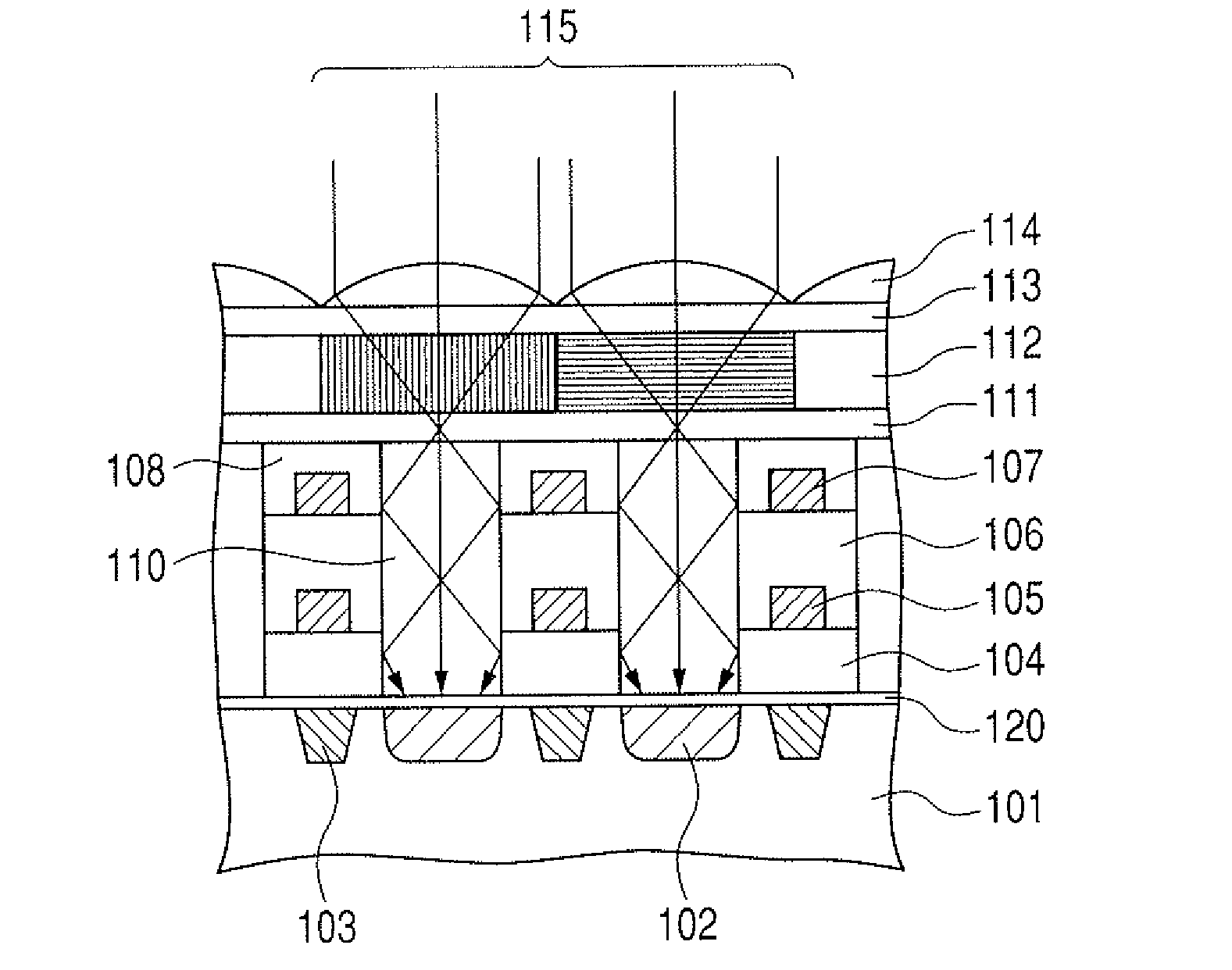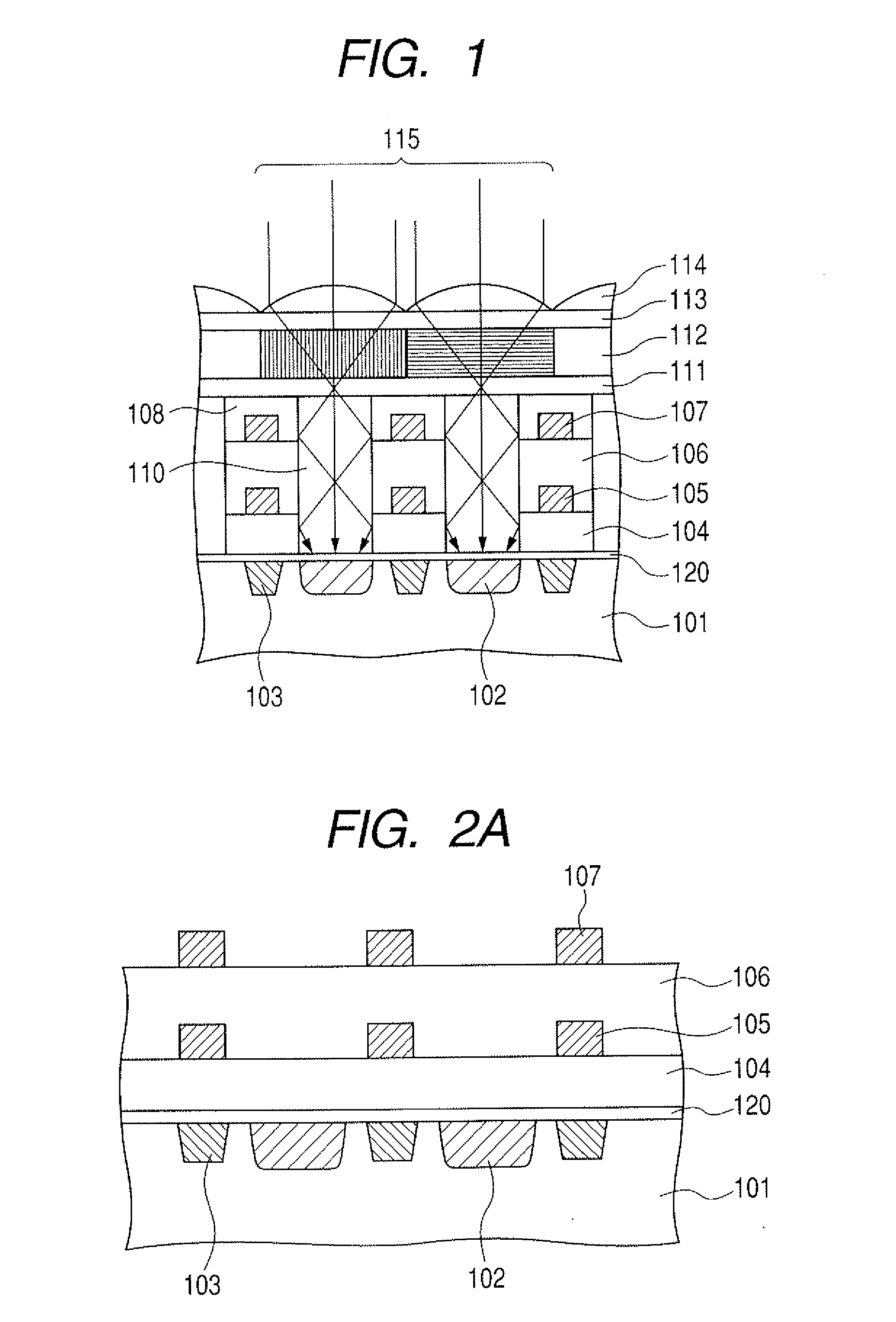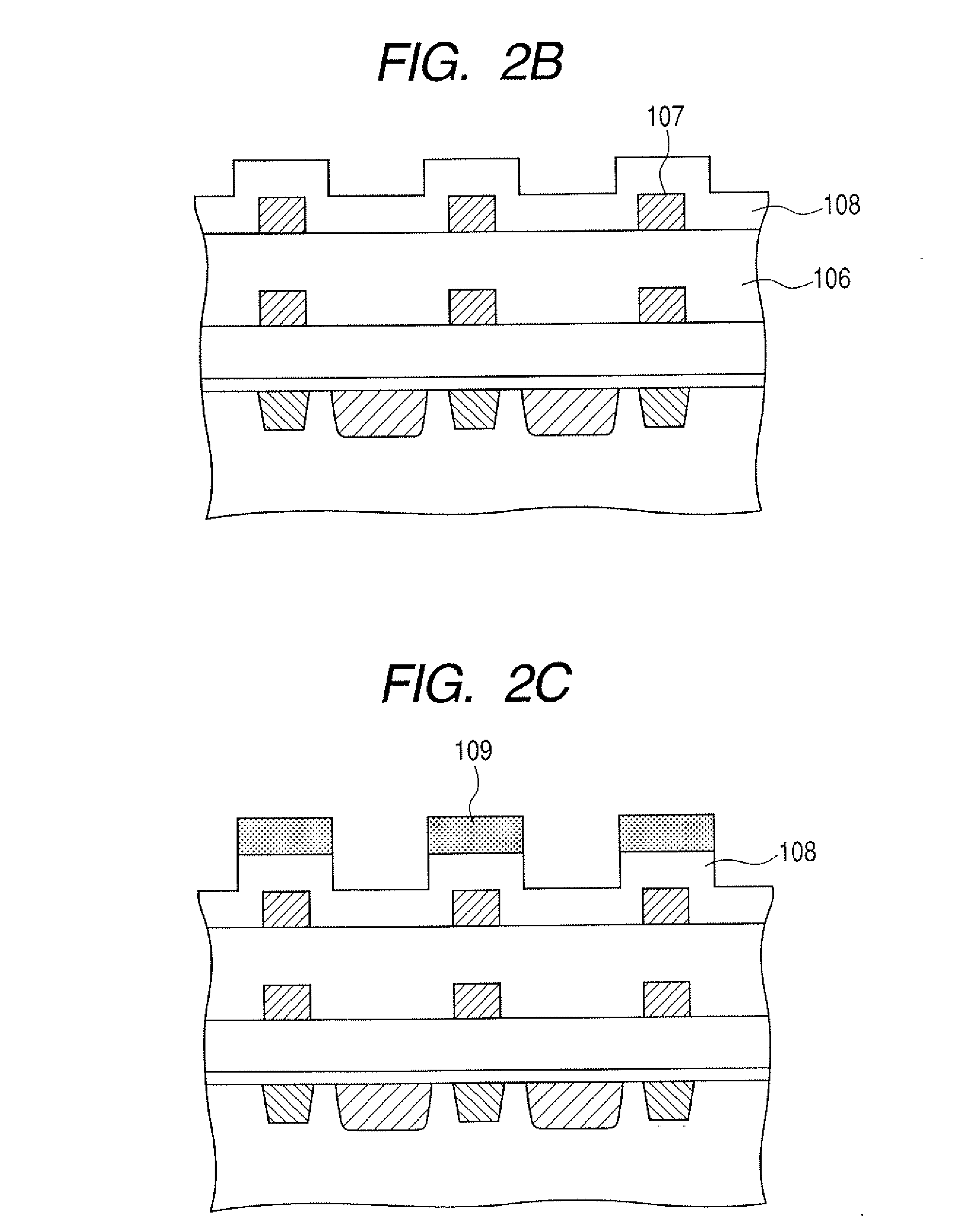Photoelectric Conversion Device and Method for Producing Photoelectric Conversion Device
a conversion device and photoelectric technology, applied in the direction of semiconductor devices, radio-controlled devices, electrical apparatus, etc., can solve the problems of remarkable problems and sensitivity lowering, and achieve the effect of reducing damage to the photoreceiving portion and damage, and increasing condensing efficiency
- Summary
- Abstract
- Description
- Claims
- Application Information
AI Technical Summary
Benefits of technology
Problems solved by technology
Method used
Image
Examples
first embodiment
[0033] Embodiments according to the present invention will be now described with reference to the drawings. FIG. 1 is a typical sectional view showing one configuration example of a photoelectric conversion t device according to a
[0034] As is shown in FIG. 1, a photoelectric conversion device has a plurality of photoreceiving portions 102 formed at regions across a predetermined depth from the surface, in a semiconductor substrate 101; element isolation regions 103 provided in between the adjacent photoreceiving portions; an etching-stop layer 120 of a layer having a lower etching rate than an upper layer has, formed on the surface of a semiconductor substrate 101 so as to cover the whole surface of the photoreceiving portion 102; a first insulation film 104 provided on the etching-stop layer 120; and a transistor for transferring an electric charge formed around the surface of the semiconductor substrate 101, though it is not shown in the drawings. In the above configuration, the e...
second embodiment
[0064] In the next place, as a second embodiment, a photoelectric conversion device with no etching-stop layer 120 provided thereon will be described.
[0065]FIG. 3 is a typical sectional view showing one configuration example of a photoelectric conversion device according to a second embodiment. In FIG. 3, the same reference numeral as in FIG. 1 is attached for the same component as in the photoelectric conversion device shown FIG. 1, and a detailed description for the component is omitted. In addition, an element isolation region and a transistor for transferring an electric charge are not shown in the figure because of being the same as in a previous case.
[0066] A photoelectric conversion device shown in FIG. 3 has the first insulation film 125 formed on a semiconductor substrate 101 having a photoreceiving portion 102 formed therein; and sets the refractive index of the first insulation film 125 equal to that of a large refraction index region 110. In this case as well, the refra...
third embodiment
[0070] Now, as a third embodiment, a photoelectric conversion device having an etching-stop layer 120 arranged so as to cover one part of the gate electrode of a transistor for transferring an electric charge will be briefly described with reference to FIGS. 5A and 5B.
[0071] Both FIGS. 5A and 5B are typical sectional views showing one configuration example of a photoelectric conversion device, and showing the production steps therefor. In FIGS. 5A and 5B, the same reference numeral as in FIG. 1 is attached for the same component as in the photoelectric conversion device shown FIG. 1, and detailed description for the component is omitted.
[0072] In FIG. 5A, a gate electrode 140 of a transistor for transferring an electric charge is arranged in the vicinity of the surface of the semiconductor substrate 101, and of the diffusion region 150 of the transistor formed in the substrate. In addition, a contact portion 145 for electrical conduction is formed on the gate electrode 141 of anoth...
PUM
 Login to View More
Login to View More Abstract
Description
Claims
Application Information
 Login to View More
Login to View More - R&D
- Intellectual Property
- Life Sciences
- Materials
- Tech Scout
- Unparalleled Data Quality
- Higher Quality Content
- 60% Fewer Hallucinations
Browse by: Latest US Patents, China's latest patents, Technical Efficacy Thesaurus, Application Domain, Technology Topic, Popular Technical Reports.
© 2025 PatSnap. All rights reserved.Legal|Privacy policy|Modern Slavery Act Transparency Statement|Sitemap|About US| Contact US: help@patsnap.com



